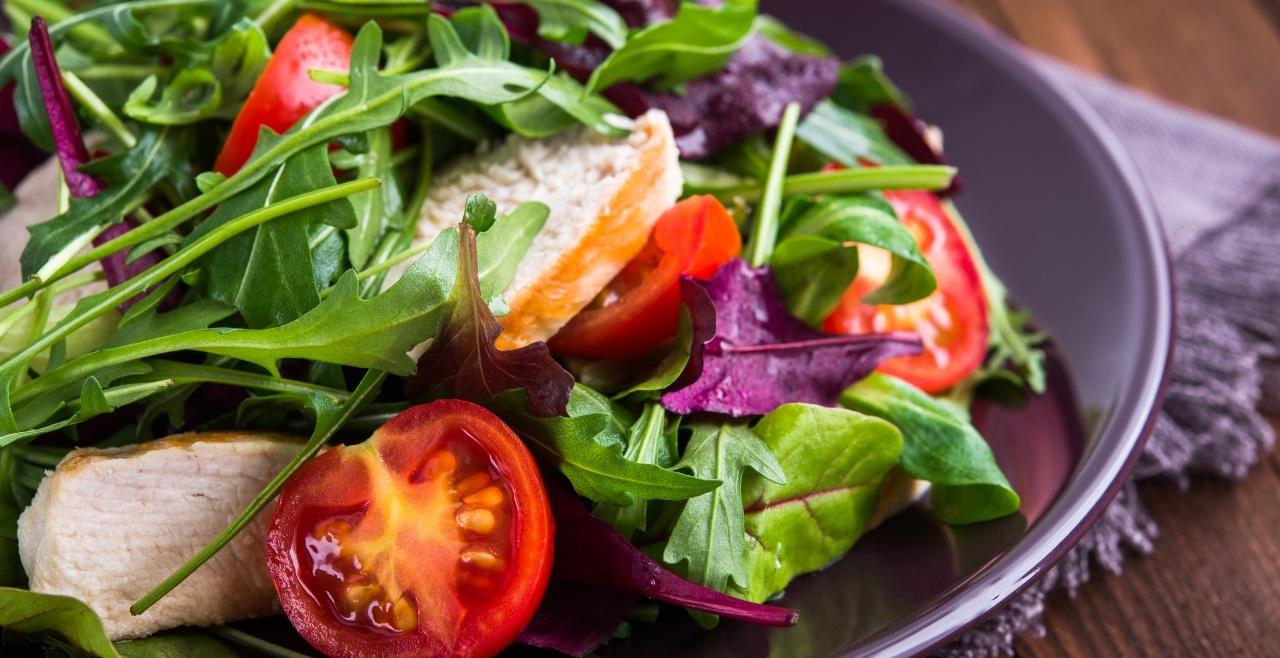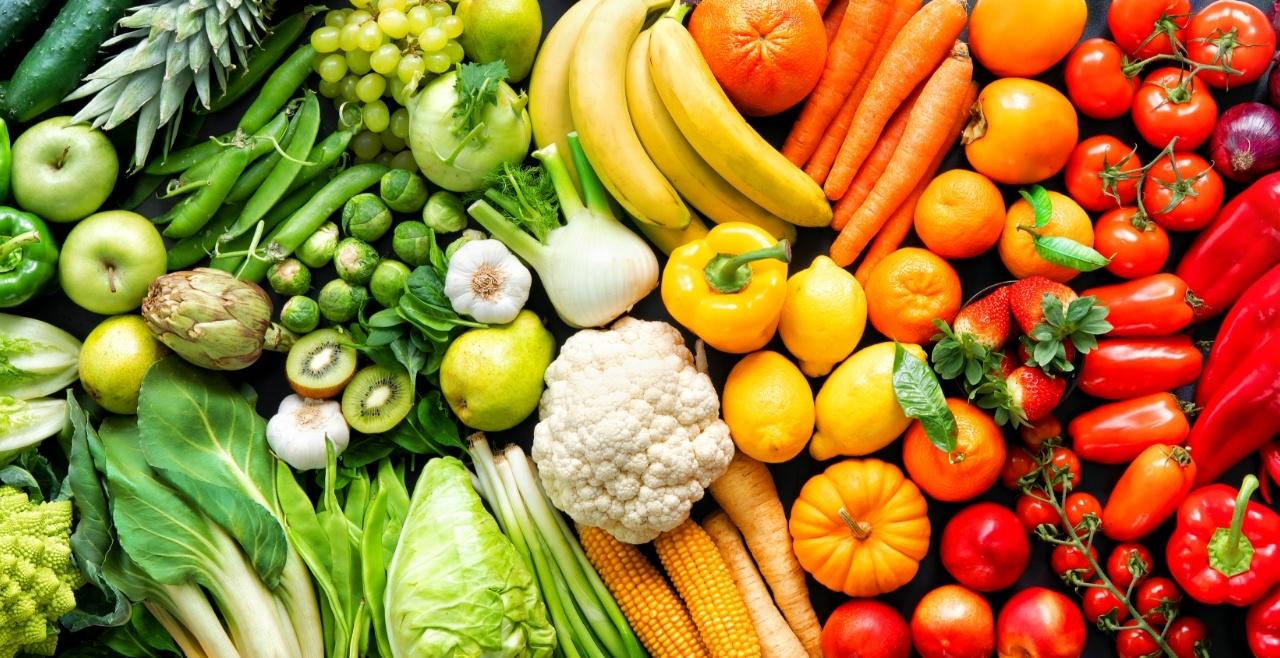In order to understand how diet and lifestyle can impact on health and wellbeing during the menopause, it is helpful to understand a little about what is happening in the body and the effects that can have.
Menopause is a natural process, during which the production of oestrogen and progesterone from the ovaries declines and eventually ceases. Although we traditionally associate these hormones with the female menstrual cycle, they have many other functions, hence the wide variety of symptoms that can occur with menopause. The decline in oestrogen tends to cause the most problems; there are oestrogen receptors throughout the body and it plays a crucial role in many aspects of health, including (but not limited to) brain function, bone formation and the healthy functioning of our arteries. A nutritional strategy for this stage of life will therefore focus on supporting wellbeing by reducing symptoms of the menopause, as well as minimising the risk of diseases, such as osteoporosis, cardiovascular disease and cognitive decline.
During the menopause, there are also significant metabolic changes that occur; changes which encourage fat storage, particularly around the middle, and therefore being mindful of eating in a way that will reduce the risk of excessive weight gain is important.


Some key points:
- We are all biochemically unique individuals. Research has shown that our bodies respond differently to the same foods due to a whole range of different factors (from genetics and our environment, to the composition of our gut bacteria); therefore, there really is not a ‘one size fits all’ approach to healthy eating at any stage of life. Learn to listen to what works for you.
- Consistently eating the basics of a good diet is what will change how you feel and improve your health, not introducing single foods or so-called superfoods.
- Invest time in meal planning and batch cooking. It will save you money and help you eat more healthily on busy days.
- Dietary change is difficult. Make small changes e.g. add one more portion of vegetables to every meal.
Overall diet
Increasingly, research suggests that following a Mediterranean dietary pattern may improve menopause symptoms such as hot flashes, mood swings and depression as well as reduce cardiovascular risk factors, such as high blood pressure, cholesterol and blood glucose. Long term adherence has also been shown to improve bone mineral density, help to prevent cognitive decline and reduce the risk of breast cancer. There is no one definition of a Mediterranean dietary pattern, however it would typically be:
- plant dominant – daily consumption of vegetables, fruit, wholegrains, beans and seeds
- moderate intake of fish, poultry and egg
- include olive oil and nuts as the principal source of fat
- occasional dairy, red meat
- low to moderate red wine intake
- low / no processed foods or sweet foods


Balancing blood sugar
Fluctuations in blood sugar contribute to symptoms such as anxiety, irritability, poor memory, brain fog and headaches – symptoms which are common in menopause. Therefore, eating in a way that helps balance your blood sugar is the first thing to consider in managing menopausal symptoms.
Balancing blood sugar is also important for the health of your adrenal glands. These small glands sit on top of your kidneys and produce a number of hormones, including stress hormones - when blood glucose levels fall, this is a stressor to the body (cells require glucose to produce energy). The adrenal glands are stimulated to produce stress hormones to help restore blood glucose levels to the normal range. Although this is a normal response, if blood glucose fluctuations continue over a long period this may reduce the adrenal glands’ ability to function effectively.
Why is supporting adrenal function important?
The adrenal glands also produce androgens, a group of sex hormones. Androgens produced by the adrenal glands circulate in the blood and can be converted to a weak form of oestrogen in adipose (fat) tissue. Post-menopause, this is the only source of oestrogen we have.
- Some research suggests that differences in adrenal androgen production in women during menopause may partially explain the difference in severity of symptoms that some women experience
- Post-menopause, the conversion of adrenal androgens to oestrogen may offer some protection against the health risks associated with loss of oestrogen e.g. increased risk of cardiovascular disease
Good functioning of the adrenal glands helps you to be more resilient, enabling you to cope better with life’s stresses.
To balance blood sugar and support adrenal health:
- refined carbohydrates (white bread, white pasta, white rice)
- sugary foods and drinks (including fruit juices and alcohol)
- processed foods (often high in sugar)
- excessive stimulants, such as caffeine
These foods / drinks raise blood sugar levels rapidly prompting a spike in insulin. Insulin is a fat-storage hormone; it will rapidly ensure excess glucose is removed from the bloodstream to be stored in the liver and adipose tissue (fat). When blood sugar levels rise rapidly, it can trigger a surge in insulin which can result in blood sugar levels then falling below their normal range, prompting you to reach for more sugary foods (and so the cycle continues).
Include:
- complex carbohydrates (wholegrains, beans, lentils, chickpeas)
- protein at every meal – e.g. fish, poultry, eggs, natural / Greek yogurt, beans, lentils, chickpeas, nuts, occasional lean red meat.
Complex carbohydrates release glucose (sugar) more slowly, providing a steady source of energy and a more appropriate insulin response. Having protein with a meal slows the digestion and absorption of sugars, preventing a sudden spike in blood glucose.
A word on alcohol: small to moderate amounts can be included as part of a healthy lifestyle and can help you relax. However, be aware that alcohol does deplete a number of nutrients including B vitamins (important for mood and energy production) and zinc (essential for collagen synthesis and mood), may trigger hot flashes and can significantly disrupt sleep.
Therefore, aim to keep within government guidelines of a maximum of 14 units a week (a small glass of wine = 1.5 units, a small shot of spirits = 1 unit) and have several drink-free days. Ideally, reduce your intake even further to a couple of small glasses at the weekend, particularly if you suffer from hot flashes or disturbed sleep.
Foods to include:
- Fibre rich foods – wholegrains, vegetables and fruit
- Provide a steady release of energy and will keep you feeling fuller for longer (reducing overall food intake). A high fibre diet also helps to reduce cardiovascular risk factors, such as elevated LDL cholesterol and high blood pressure. We cannot digest or absorb dietary fibre, however it is food for our intestinal bacteria, which research now shows plays a key role in many aspects of body function, including regulating appetite and mood.
- Aim to ‘eat a rainbow’ of different coloured vegetables and fruit - 5 servings of vegetables, 2 servings of fruit a day
- Fruit and vegetables are also rich in vitamin C, essential for collagen synthesis, which declines as we age. Collagen is a major component of skin and adds elasticity and suppleness, preventing wrinkling.
- Wild rice, brown rice, whole oats are good wholegrain choices. Quinoa and buckwheat, although technically not ‘grains’ are also good sources of fibre.
- Dark green leafy vegetables – rocket, watercress, kale, broccoli – good source of:
- Magnesium – important for energy production and bone health. Low levels are associated with symptoms that are often experienced in menopause, such as anxiety, irritability, low mood, difficulty sleeping, muscle cramps and feeling easily stressed.
- Vitamin K – important for bone building and bone mineralisation
- Broccoli is also a great source of plant compounds which can be metabolised to sulforaphane, a chemical well-researched for its anti-cancer properties and may protect against skin damage; sulforaphane also helps promote detoxification of old hormones in the liver (helping hormone balance)
- Aim for a quarter of the plate at each main meal.
- Healthy fats
- Fat is essential for many functions in the body. Whilst we tend to associate fat with just stored energy, fats are a major component of our cell membranes, are essential for the synthesis of steroid hormones (which includes oestrogen and stress hormones) and form a significant proportion of the brain (around 60% of our brain is fat).
- But not all fat is equal. Foods rich in monounsaturated fats (e.g. oleic acid) and polyunsaturated fats (e.g. omega 3 and omega 6) should be the primary choices. This includes:
- olive oil – choose unrefined, extra-virgin and use as a dressing (not to fry with)
- nuts - almonds, walnuts, Brazil nuts, hazelnuts (not salted, nor peanuts). Regular nut consumption has been shown to suppress hunger (reducing overall food intake), reduce inflammation and cardiovascular disease risk
- seeds – pumpkin seeds (rich in zinc, essential for skin health), sunflower seeds. Flaxseeds are particularly beneficial during menopause – they are a rich source of lignans, a phytoestrogen (‘plant oestrogens’) that may reduce hot flashes and other menopausal symptoms.
- avocadoes – rich in monounsaturated fat and also an excellent source of fibre. Increase satiety (feelings of fullness) and improve cholesterol levels. A small study found including half an avocado at lunch time reduced afternoon snacking. Also rich in vitamin E, a powerful antioxidant that can reduce skin ageing.
- oily fish – salmon, mackerel, trout, sardines, herrings – good source of the omega-3 fatty acids EPA and DHA, which have anti-inflammatory effects, reduce the risk of cardiovascular disease and have been shown to improve mood. Sardines are also rich in calcium.
- Good quality protein – fish, seafood, poultry, eggs, lentils, beans, chickpeas, natural yogurt, nuts and seeds (occasional lean red meat - maximum 2x week)
- Proteins are the building blocks of our body, important for growth and repair of cells. As we age, our need for protein increases. Sufficient protein helps maintain muscle and bone strength, as well as being essential for healthy skin, hair and nails (protein rich foods contain the amino acids needed to make collagen, which declines as we age). It can also play a key role in mood and cognitive function, as neurotransmitters such as serotonin (reduced levels of which are linked to anxiety and depression) are synthesised from the amino acids found in proteins
- Chickpeas, lentils and beans are also good sources of phytoestrogens – ‘plant oestrogens’, which may reduce the severity of menopause symptoms. Fermented soya bean products, such as miso and tempeh are also great sources of phytoestrogens.
- Eggs (e.g. hard boiled) can be a good snack. Contrary to popular belief, eggs do not affect our blood cholesterol (foods high in saturated fat and sugar will elevate blood cholesterol)
- Live natural yogurt (full fat) is an excellent addition to the diet. Natural yogurt is a fermented food containing ‘friendly’ bacteria, which promotes a good bacterial balance in the gut. Research now shows our gut bacteria play a key role in many aspects of body function, including regulating appetite and mood. 1 cup of full fat yogurt also provides around 450mg of calcium, approximately one third of recommended daily intake. [Avoid flavoured / fruit yogurts – high in sugar]
- Aim for protein at each meal. A quarter of your plate, the equivalent to the size of your clenched fist
- Drinks:
- Water. Staying hydrated can help improve energy levels and mood as well as skin vitality. Dehydration can also trigger symptoms such as headaches and even hot flashes (by affecting the nervous system). Water is the best option for staying hydrated.
- Fill a 1 litre bottle and keep it with you, at home or work, and drink little and often. Drink this and a couple more glasses (e.g. first thing in the morning and when you get home).
- Green tea – has been shown to have several beneficial properties, including lowering cholesterol, enhancing fat metabolism and improving insulin sensitivity. It does contain caffeine, so best avoided after lunch time if you have any difficulty sleeping
- Water. Staying hydrated can help improve energy levels and mood as well as skin vitality. Dehydration can also trigger symptoms such as headaches and even hot flashes (by affecting the nervous system). Water is the best option for staying hydrated.
Meal ideas
Breakfast:
- Put ½ cup oats, 1-2 tbsp ground flaxseeds, a good sprinkle of cinnamon and 5-7 walnuts or pecan nuts (broken into pieces) in a bowl and mix. Pour in just enough unsweetened nut or oat milk to comfortably cover the mixture. Leave for 5-10 mins in the fridge (or overnight). When ready to eat, top with a selection of berries and a good dollop of full-fat live natural yogurt (e.g. ½ cup).
- This will incorporate so many of the good foods above and set your day off to a good start. You can vary the fruit – kiwi fruits are also good additions. At first, if you are used to sweeter foods, it may not taste amazing to you. You could add a drizzle of honey to help, although your taste buds will accustom to it.
Lunch:
- At this time of year, salads are fantastic but should be so much more than lettuce, tomatoes and cucumbers! Remember the importance of protein and healthy fats.
- Chickpeas, lentils and beans are excellent bases to make salads from. E.g. you could add chickpeas to a Greek style salad (tomatoes, cucumbers, feta cheese, olives, olive oil, oregano) and serve with a good portion of watercress or rocket. Or combine cooked lentils with cooked beetroot, roasted butternut squash, red onion and goats’ cheese and serve with a good portion of watercress or rocket. Hard boiled eggs and avocadoes are also great additions to salads.
- It is quick and easy to make your own tasty salad dressings based on extra-virgin olive oil. There are lots of great recipes out there including things like lemon juice, apple cider vinegar and honey. Natural yogurt can also be the basis of a good salad dressing.
- In winter – soups based on vegetables and beans / lentils / chickpeas are an excellent choice. When you are ready to serve, you could also stir in ground flaxseeds, to give an extra boost.
Dinner:
- Try to keep to the rule: ½ the plate vegetables (not potatoes or starchy veg), ¼ the plate protein foods, ¼ the plate complex carbohydrates (wholegrains or root vegetables).
- If you are used to basing your dinners around pasta and rice, try reducing the portion size of the pasta and increasing the protein and vegetable portion as above.
Snacks – try to reduce snacks. But good choices are:
- Slices of apple topped with unsweetened nut butter (e.g. almond butter)
- Nuts with a couple of squares of dark chocolate (preferably organic and >80% cocoa). Almonds, walnuts and a few Brazil nuts are good choices.
- Fruit (berries are great choices), topped with live natural yogurt. You can add a few broken walnuts or pecan nuts for crunch, or seeds like pumpkin seeds and sunflower seeds.






